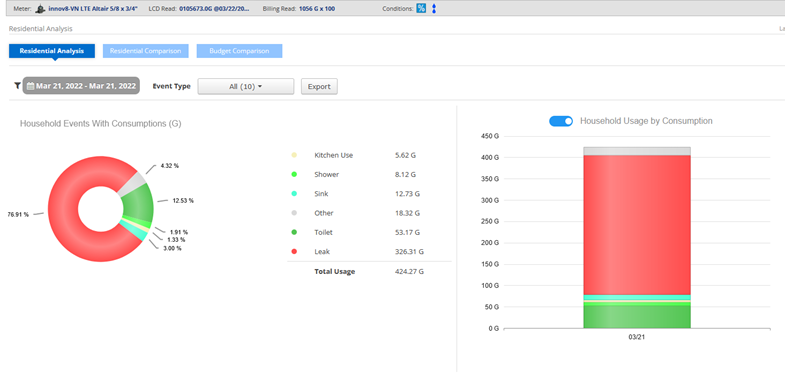Finding a Leak

Leaks
With the invention of indoor plumbing came plumbing leaks. Everyone has them at some point in time, and they can be very costly if not found quickly. Our team of water leak enthusiast have put together some tips on how to locate and prevent water leaks in your home.
Tip #1 - Sign Up for WaterScope
- If your home is equipped with one of our new water meters you have access to a program called WaterScope.
- WaterScope can send out Leak Alerts, Unexpected Usage Alerts, and Watering Notices when you sign up for a free account.
- WaterScope also shows customers a breakdown of their water usage so you can see where you are using more water, or how much water is wasted by a leak.

- WaterScope uses algorithms to analyze water flow and flow time to determine the type of usage. For water leaks specifically, WaterScope sees any amount of constant flow through the meter for more than 45 minutes as the leak.
Customers who do not have the new cell meters do not have access to the WaterScope program at this time, however, there are a few other tips that could help identify leaks.
Tip #2 - Look for Water Leaks
- Check Faucets for leaks- even a tiny drip can waste thousands of gallons of water and be costly, not just for the cost of the water, but repairing damage to the home.
- Check Toilets- If you toilet is literally running, you are consuming around 4 gallons of water per minute. Toilets usually run constantly due to a broken flapper. Check out this video from WaterSense: Fixing your Flapper
- If you don't hear your toilet running, you should still test for Silent Leaks. Silent leaks make up the majority of toilet leaks and can be difficult to hear. To test for a silent leak put a dye tab, or a few drops of food coloring, in your toilet tank. Wait 30 minutes, do not flush. If there is any dye in the toilet bowl, then your toilet is leaking. For more help on finding toilet leaks watch this video from Concord General Services: Finding Toilet Leaks
- Check Irrigation Systems- Irrigation season leaks can be some of the most costly leaks our team sees throughout the year. Make sure to have your irrigation system clean out at the end of irrigation season and inspect your system once you turn it back on. Make sure to keep an eye out for puddles in your garden area as this can be a sign of broke irrigation lines.
- For more tips regarding irrigation systems visit the EPA's Sprinkler Spruce up page.

